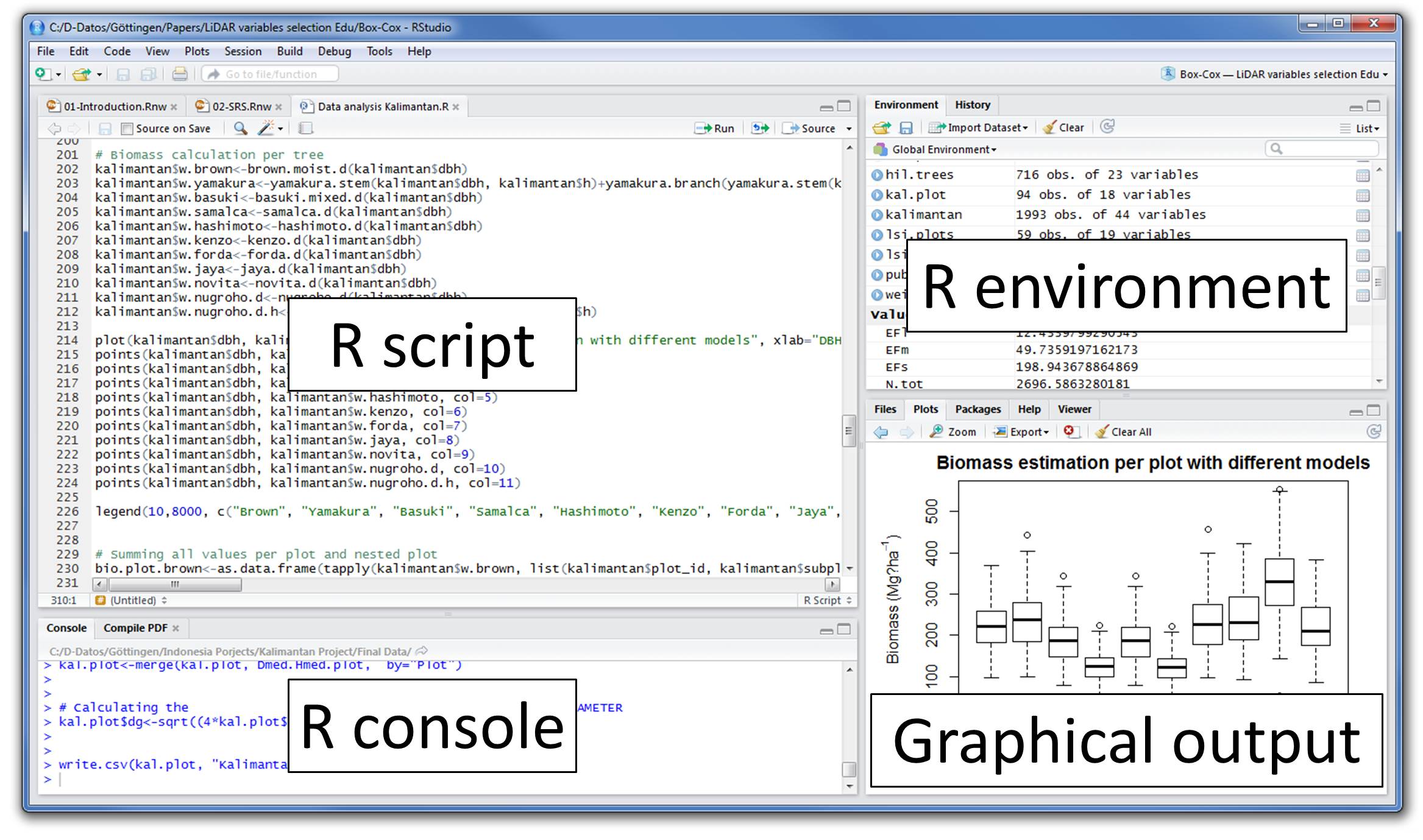
This is a prompt that tells you that R is ready for new code. At the beginning of the console you will see the character.

By default, It is present at the bottom left of the window. That way, if something on your computer crashes while you are working, RStudio will have your code waiting for you when you re-open RStudio, as it has recovered the code that you were editing. Before you start typing in an untitled R script, you should always save the file under a new file name. When you open RStudio, it will automatically start a new Untitled script. R scripts are just text files with the “.R” extension. The source pane is where you create and edit R Scripts” – your collections of code. Let’s see about each window briefly: Source When you launch RStudio, you will see the following four windows or panes. It includes a console, syntax-highlighting editor that supports direct code execution, as well as tools for plotting, history, debugging and workspace management. R Studio is an integrated development environment (IDE) for R. Open RStudio by clicking on the RStudio desktop icon. Go to RStudio website and click on “Download RStudio” and follow the directions for your operating system. Go to R Project website and download R for your operating system. An overview of the key components available in RStudio.This tutorial will cover the following topics It is advisable to learn to use R, especially if you will be dealing with statistical operations, where you may be expected to know how to use it. RStudio runs in windows mac and Linux and even over the web using RStudio Server.

RStudio is a separate piece of software that works with R to make R much more user friendly with some helpful features that make your R programming easier and more efficient.

Unlike many of the beginners’ assumption, Both R and RStudio are two different applications/software. This tutorial is an attempt to explain beginners how to install, run, and use RStudio.


 0 kommentar(er)
0 kommentar(er)
